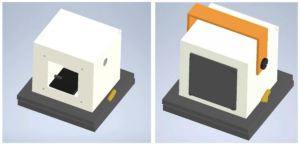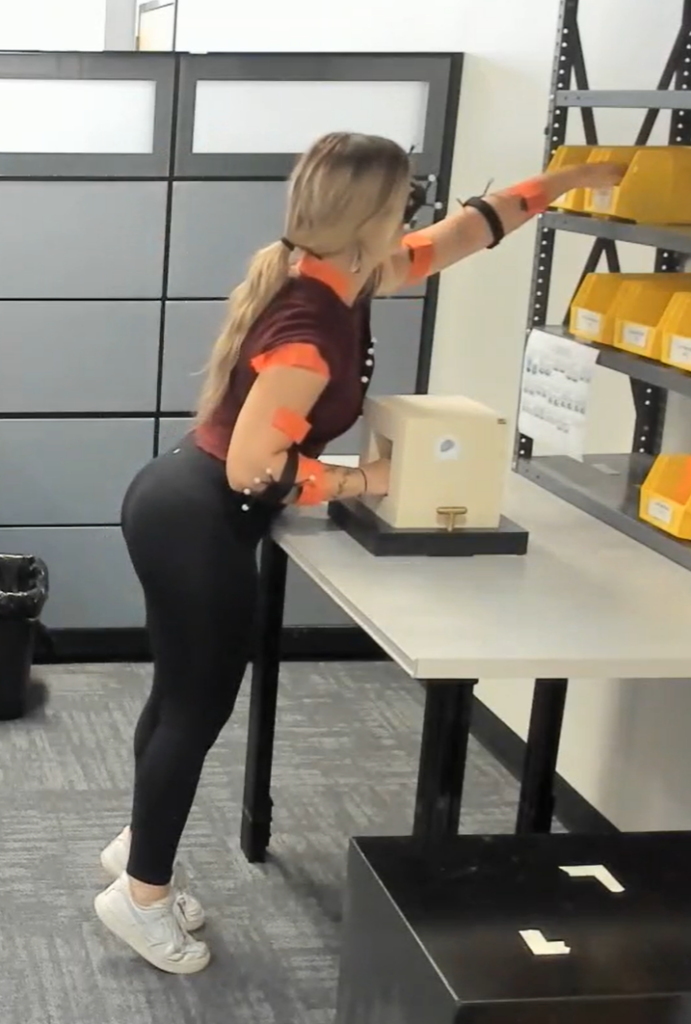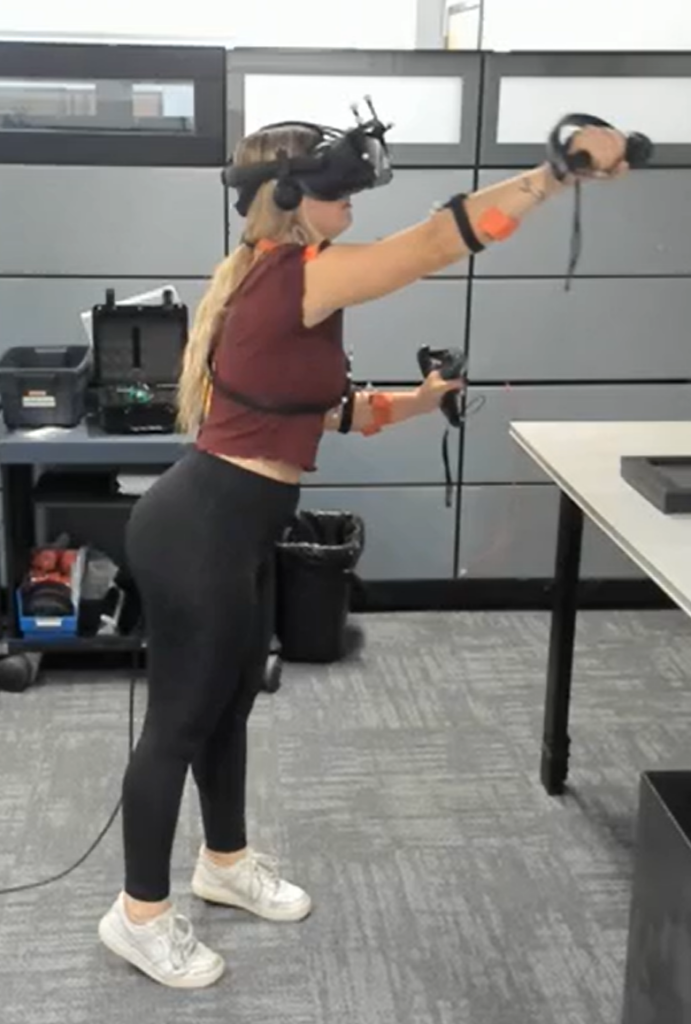Featured Research

Manufacturing facilities perform ergonomic assessments to reduce employee injuries, but that process may shut down a manufacturing line, which can lead to delays in production and higher costs. Professor Stephen Gilbert and student Kathryn Lieffrig at VRAC explored whether virtual reality can be a reliable substitute.
The Portable Ergonomic Assessment Tool (PEAT) study tested whether the humans’ static and fluid motions in a VR product assembly were ergonomically similar to those in a real assembly. The PEAT product was designed to elicit a range of ergonomic poses and participants assembled PEAT in both the real-world and a VR simulation. If ergonomic analysis deemed the poses equivalent in both modes, then VR could be used to save companies time and money during ergonomic analysis.
This PEAT project used multiple body tracking tools to compare the participants’ ergonomic poses in both the physical and virtual environment: REBA/RULA analysis based on video, HumanTech video-based analysis, optical camera motion tracking, and EMG sensors on the upper body muscles. The virtual environment was modeled based on exact measurements of the physical environment. The Vive headset and controllers were used in this experiment to interact with the environment.
Under the supervision of undergraduate research assistants Madison Bemis, Tatum Englund, and Olivia Poppen, the 65 participants each assembled PEAT in both physical and virtual conditions. While it took significantly longer to complete the assembly in VR, many of the ergonomic positions (e.g., bin picks) were equivalent across modes, suggesting that for those poses, VR could offer an effective substitute. However, because the action of screwing in bolts and other components, performed with using fine finger movements in the real world, had to be performed with hand-sized VR controllers in the virtual world, these movements were not well represented ergonomically in VR. It was also found that HumanTech video-based analysis offered the most equivalent ergonomic analysis across both modes. EMG muscle activation data, on the other hand, differed between modes
The PEAT study found evidence proving VR can be utilized to conduct ergonomic assessments for fluid motion studies.


Tatum Englund illustrates a bin pick in the physical environment in the first photo, and a bin pick in VR in the second photo. Postures like these were assessed using four types of ergonomic assessments.
